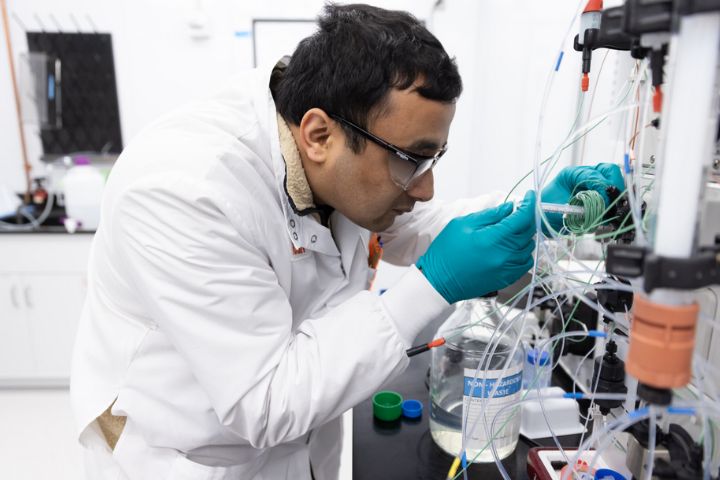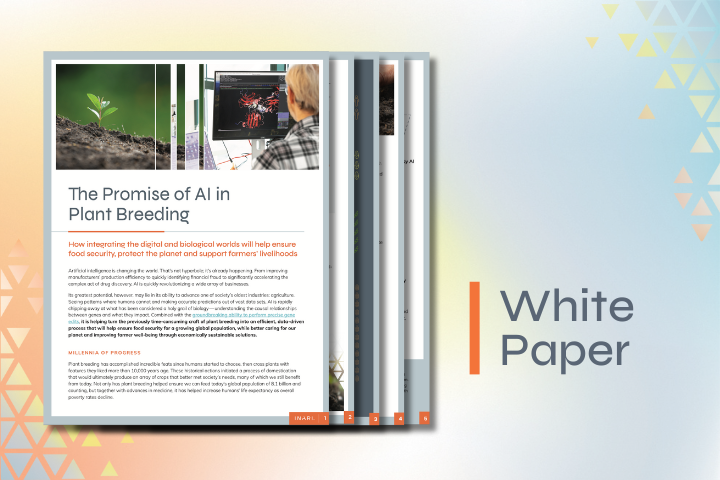Genetic diversity in plants is the foundation of resilience, productivity, and adaptability. It enables crops to withstand environmental pressures, resist diseases, and thrive in varying climates, the result of millennia of natural – and in some cases, human-led – selection.
Take corn, for example, a crop where two varieties can appear similar, yet have even less in common genetically than a human and a chimpanzee. These genetic differences result in one variety delivering its best yields in cold, wet regions, while another performs its best in hot, dry conditions.
Biodiversity like this has clear advantages, but it also has been difficult to maintain over time and throughout the breeding process. As a result, plants have become more vulnerable to rapidly changing environmental conditions.
Recent technological progress offers a path forward, however, through the arrival of gene editing. Here are three ways this groundbreaking technology could be a gamechanger for not only maintaining, but also restoring biodiversity:
1. Reversing Genetic Loss
Traditional breeding is defined by the process of crossing plants together to generate desired results. While breeders aim for positive and beneficial traits, the approach depends heavily on nature’s randomness. Although techniques have greatly improved over the past century to increase the likelihood of breeding success, the process remains mostly blind, guided more by probability than precision.
The benefits of plant breeding to society is unquestioned, but there has always been an inherent tradeoff: the multiple rounds of crossing, testing and whittling required to land on a desirable outcome also causes many other valuable genetic variations to be lost. With gene editing, however, this tradeoff can be eliminated.
That’s because when using this breeding technology, scientists can directly adjust specific genes and gene networks in plants to instantly create a wide range of novel variations, bypassing hundreds of years of diversity-culling trial and error. And by enabling the creation of variations from the plants’ natural DNA, the process introduces new or improved abilities that breeders can select from while maintaining the underlying desirable genetics.
At Inari, we are working to significantly increase soybean, corn and wheat yield potential by editing the plants’ natural DNA. The result is literally hundreds of novel variations that add beneficial characteristics to the genetic pool without negatively impacting diversity.
2. Providing More Options, Faster
Gene editing allows scientists to edit any variety directly – and once an effective edit is identified, it can be applied to many varieties at the same time. This is another core benefit of gene editing: it greatly accelerates breeding timelines, delivering meaningful outcomes in a fraction of the time. As a result, breeders can reintroduce biodiversity at an incredibly rapid pace.
For example, take a portfolio of 100 soybean varieties that are highly desirable across geographies, except where a certain disease is rampant. Through gene editing, scientists can introduce genetic changes that make new versions of those varieties that are resistant to the disease. Within a couple of years, all varieties of a portfolio can benefit from the positive effect of the edits, offering a significant acceleration from previous approaches.
3. Making the Previously Non-Viable Viable
Beyond mitigating genetic erosion, gene editing also represents a new frontier in plant science, one where genetic diversity is not only preserved but actively enhanced.
Bringing back lost genetic diversity is not a new idea. Valuable novel variations, for example disease resistance, still exist in the “wild” (i.e. ancestral) relatives of today’s crops. The challenge is transferring those beneficial variations into cultivated species without losing positive attributes or introducing negative ones through the genetic reshuffling that occurs during the traditional breeding process. Gene editing has the potential to change that by enabling precise creation and selection of only beneficial variations in specific genes, without the risk of introducing undesirable traits.
New techniques will enable us to replicate the positive variations found in wild relatives of cultivated species. To do so, it is essential to identify the target genes and variations that exist in wild relatives, as well as in cultivated species, to design the precise genetic changes needed. Advances in artificial intelligence and increasing efforts to generate data like the ones that enable Inari’s predictive design platform are boosting the ability of breeders to make that dream finally come true.
Gene editing supports the next agricultural revolution – one that prioritizes genetic diversity alongside productivity to ensure ongoing food security, resulting in a more resilient and sustainable food system. As agriculture faces mounting, fast-moving challenges, embracing advanced genetic tools will be key to securing a future where crops can thrive, farmers can succeed, and people everywhere can access nutritious food.
Learn more about its potential here.
RELATED POSTS
Inari’s Labs Achieve ‘My Green Lab’ Certification
We have a deep commitment at Inari to food system sustainability, which in addition to prioritizing food security and improved farmer well-being puts a focus on better caring for our…
An October Reflection on Food System Sustainability
By Jamie SaxonHead of Sustainability – Harvest season is in full swing in the U.S., a time of year that’s equal parts exciting, nerve-wracking and busy for farmers as they…
The Promise of AI in Plant Breeding
Artificial intelligence is already changing the world. Its greatest potential, however, may lie in its ability to advance one of society’s oldest industries: agriculture. Seeing patterns where humans cannot and…


